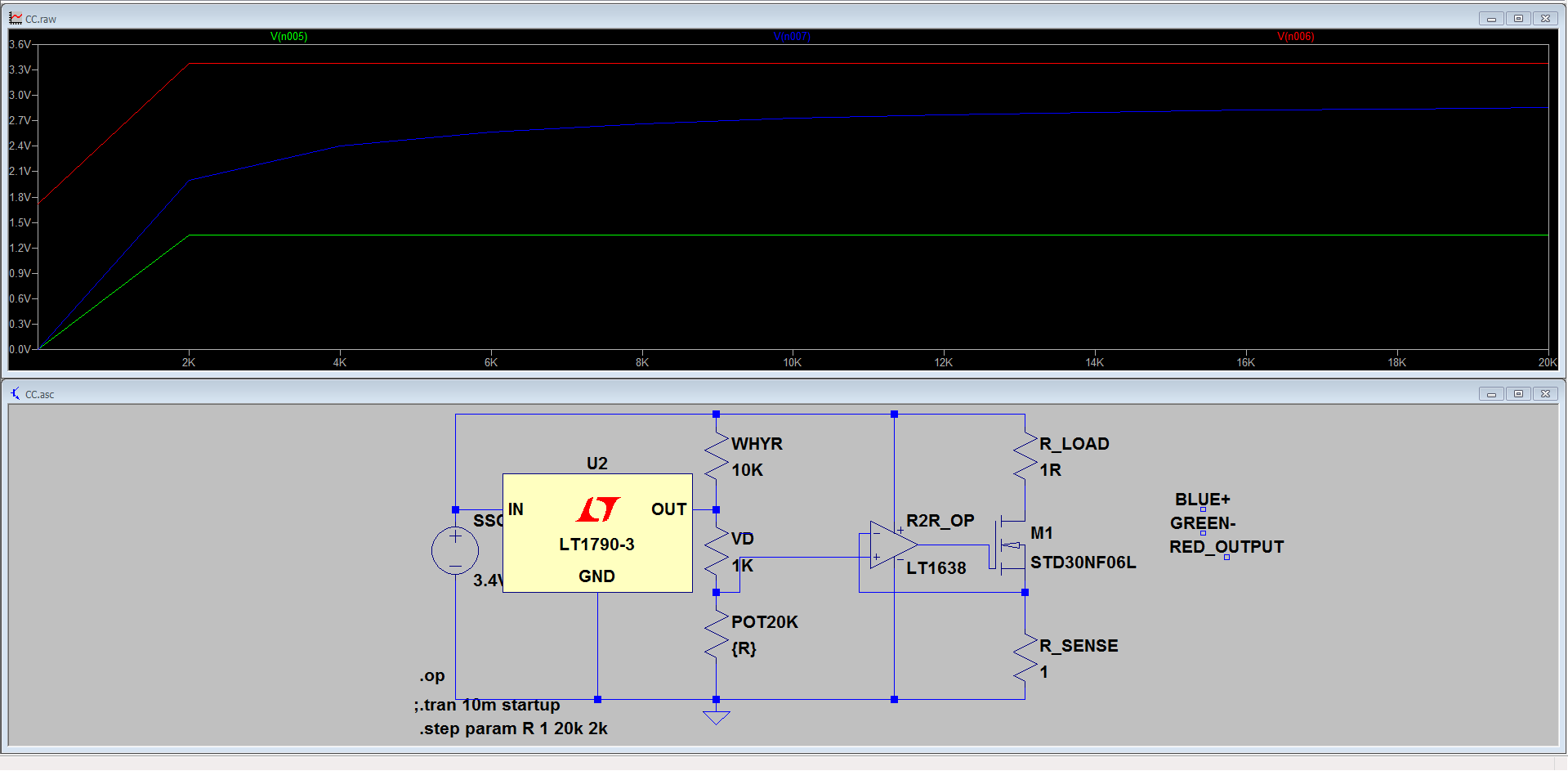xReM1x
Member level 5
hi.
I "desigend" a linear adjustable current source from 3V voltage refrence and rail to rail amplifier. it works fine.. unless I go below ~7V and than the output current start dropping, and I'm trying to understand why does it happend, the amplifier is configured as an buffer but the output and the voltage on the inverting input is not the same.
here is the schematic :

I'm pretty sure this schematic worked today without problems, just now this started to happend. anyone have any idea? or any suggestion to the schematic (VIN going to be 3.3V to 12V and current supposd to be adjustable from at least 10mA to at least 2.8A)
I "desigend" a linear adjustable current source from 3V voltage refrence and rail to rail amplifier. it works fine.. unless I go below ~7V and than the output current start dropping, and I'm trying to understand why does it happend, the amplifier is configured as an buffer but the output and the voltage on the inverting input is not the same.
here is the schematic :

I'm pretty sure this schematic worked today without problems, just now this started to happend. anyone have any idea? or any suggestion to the schematic (VIN going to be 3.3V to 12V and current supposd to be adjustable from at least 10mA to at least 2.8A)